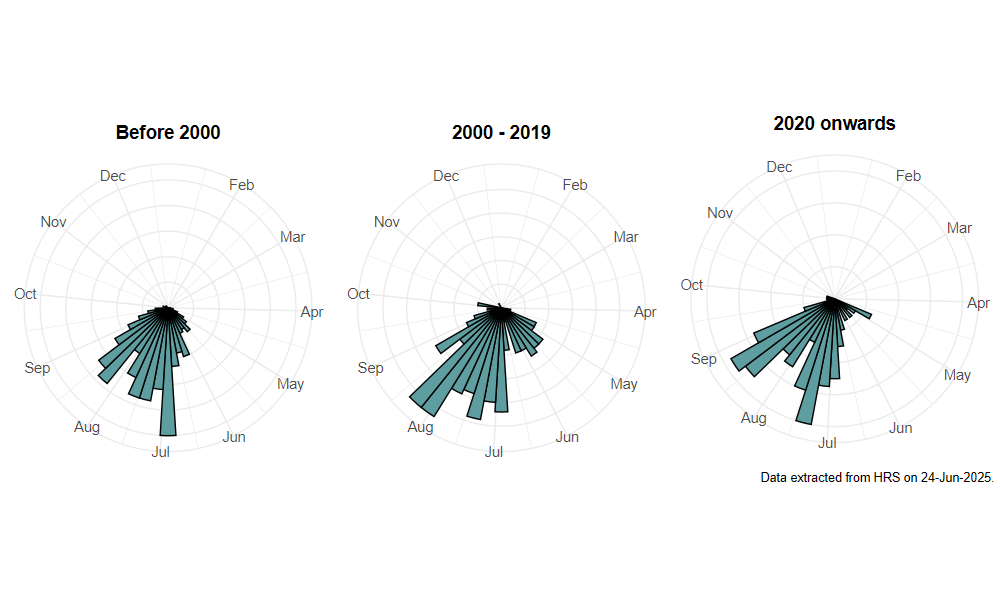Sphaerophoria rueppellii (Wiedemann, 1830)
Identification
Identification difficulty = 3. ![]()
![]() according to Ball & Morris, 20241
according to Ball & Morris, 20241
Biology
The larva feeds on aphids on such plants as Brassica sp. and sow-thistles Sonchus sp. It can be found in dry, rank grassland and other open, dry situations such as ruderal communities, although females have been observed ovipositing on Hairy Willowherb Epilobium hirsutum, which is more typical of damper situations. According to Speight (2017)2, it occurs in open fringes of wetlands, including salt-marsh on the western edge of its European range, and also on exposed, vegetated, sand and gravel beds beside rivers. Adults fly amongst tall vegetation and visit flowers, especially yellow composites.
Flight period
The following plots show the number of unique records per week excluding those reported to be of immature stages.

Distribution
This appears to be primarily coastal and is especially frequent in the marshes around the Thames where it is characteristically found on grassy flood banks. There are scattered records from elsewhere in the southern half of Britain where it is often found in ruderal situations such as field edges with mayweeds Matricaria sp. and knotweeds Persicaria sp. There are a small number of records from Scotland, primarily in the east.

Trends
The following plots show the Frescalo TFactor vs year and a map of the rescaled frequency (all records) for the species.
-
Ball, S., & Morris, R. (2024). Hoverflies of Britain and Ireland. WILDGuides (3rd ed.). Oxford: Princeton University Press. ↩
-
Speight, M. (2017). Species accounts of European Syrphidae ( No. 97). yrph the Net, the database of European Syrphidae (Diptera) (p. 294). Dublin: Syrph the Net publications. Retrieved from https://pollinators.ie/wordpress/wp-content/uploads/2018/05/StN-2017-Species-Accounts.pdf ↩